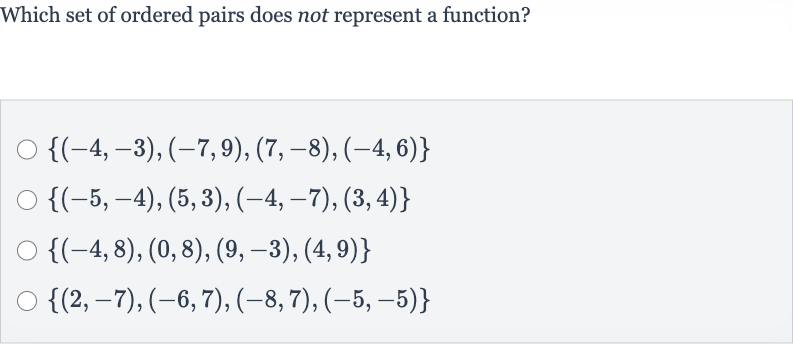Full solution
Q. Which set of ordered pairs does not represent a function?
- Define Function: A function is defined as a relation where each input ( extit{x}-value) has exactly one output ( extit{y}-value). To determine which set of ordered pairs does not represent a function, we need to check if there are any repeated extit{x}-values with different extit{y}-values in each set.
- Check First Set: Let's examine the first set: We can see that the -value appears twice with different -values ( and ). This violates the definition of a function, where each -value must be associated with exactly one -value.
- Check Second Set: Now let's check the second set: In this set, all -values are unique, so this set does represent a function.
- Check Third Set: Next, we examine the third set: All -values in this set are also unique, so this set represents a function.
- Check Fourth Set: Finally, let's look at the fourth set: All -values in this set are unique as well, which means this set represents a function.
- Identify Set Without Function: Since the first set is the only one with repeated -values that have different -values, it is the set that does not represent a function.
More problems from Write a quadratic function from its x-intercepts and another point
QuestionGet tutor help
QuestionGet tutor help
QuestionGet tutor help
QuestionGet tutor help
QuestionGet tutor help
QuestionGet tutor help
QuestionGet tutor help
QuestionGet tutor help

